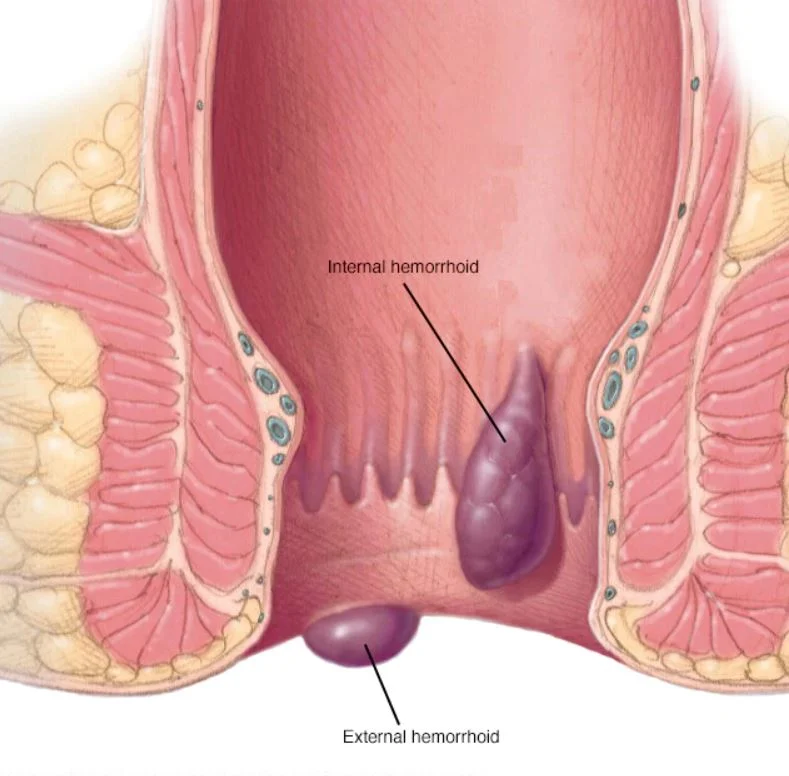

Hemorrhoids are enlarged and engorged blood vessels in and around the rectum (anus) to provide extra padding to protect the anal opening. In an abnormal state, they cause decongestion of the anal cushions resulting in decreased anal tone & accompanied by pain, bleeding and itching during evacuation mainly due to lifestyle, age, occupation and dietary factors. The traditional science of Ayurveda, explains hemorrhoids as Guda-arsha. This disease makes the human body a dumping ground of unnecessary, and unlimited toxic and waste substances mainly because of irregular diet, improper digestion, chronic constipation, abnormal body posture, complicated delivery, repeated abortion, psychological imbalances, obesity & stress and can occur in any person whether it is men, women and children of any age group.
The management aspects of treating piles with ayurvedic medicines have shown great results because the herbal remedies have proven the effect on the various causes of the diseases with an individual approach. The ayurvedic medicines act directly on the inflamed blood vessels helping reduce both the pain and bleeding from the rectum in both the internal and external piles.
Ayurvedic texts suggest a fourfold treatment for hemorrhoids based on the stages & severity of symptoms:
At initial stage with fewer signs & symptoms, piles will be treated with medicinal management together with a conservative approach with a strict diet and lifestyle changes, Ksharakarma or herbal caustic paste cauterization and if not cured with all above treatment, it may require kshara-sutra ligation or Agni karma approach, depending on the severity and prognosis of the piles.
The conventional preventional approach is the best treatment for hemorrhoids. This approach evaluates the hemorrhoidal aspects in purely biophysical terms as in treating the symptoms exhibited with ayurvedic herbs & formulations along with dietary supplements that aid in improving them. The symptom wise conservational ayurvedic herbs & formulations for hemorrhoids are as follows;
Piles have an excellent para-surgical procedure in Ayurveda called Kshar sutra chikitsa, a non-invasive, short duration(~30–45 mins) treatment, done under local anesthesia. The treatment procedure entirely depends on the individual body constitution and the nature of the disease.
Kshar Karma involves the application of a herbal alkaline paste, such as Apamarg Kshar, Snuhi Kshar, into the affected area resulting in the collapse of the vein walls & shrinking of hemorrhoid pedicles as it causes protein coagulation and necrosis of the tissues which sheds the pile mass.
Ayurvedic Kshar-sutra is a medicated thread used as a non-surgical treatment for hemorrhoids with a high success rate and negligible reoccurrence.
The Standard Kshara Sutra is prepared by overall 21 coatings described as follows;
Agni karma or thermal heat burn is a much more natural method of treatment for bleeding piles without failure, with minimal chances of recurrence. In this technique, the unwanted sprouted lumps or dry pile mass are destroyed using maintained red hot thermo-cautery that leads to slow solidifying of the pile mass & removing it from the root.
Chedana karma in Ayurveda is the opted surgical approach with ligation & excision of pile mass, similar to conventional open hemorrhoidectomy.
The preventive approach is based on wise words that it is much better than healing because it saves the person from being sick. Instead of waiting for lifestyle ailments to occur, a proactive approach with preventive guidelines decreases the likelihood of the problem. It basically compiles the Do’s & Dont w.r.t food and lifestyle pattern that is required for a healthy bowels and a piles-free lifestyle. They are as follows;
In this materialistic world, the desire to be aware & health-conscious is a must to remain healthy. Ayurveda has immense potential to manage all stages of hemorrhoids with remarkable efficacy without any complications or side effects as it does not have a one-size-fits-all approach because of different constitutions & dosha involvement in hemorrhoids.
Disclaimer: The information provided by us on Pilesmedicine.in is for general informational purposes only and is not a substitute for professional advice. All information on the Site is provided in good faith, however we make no representation or guarantee of any kind, express or implied, regarding the accuracy, adequacy, validity, reliability, availability or completeness of any information on the Site. UNDER NO CIRCUMSTANCE SHALL WE HAVE ANY LIABILITY TO YOU FOR ANY LOSS OR DAMAGE OF ANY KIND INCURRED AS A RESULT OF THE USE OF THE SITE OR RELIANCE ON ANY INFORMATION PROVIDED ON THE SITE. YOUR USE OF THE SITE AND YOUR RELIANCE ON ANY INFORMATION ON THE SITE IS SOLELY AT YOUR OWN RISK. Accordingly, before taking any actions based upon such information, we encourage you to consult with the appropriate professionals.
PilesMedicine.in ©2025. All Rights Reserved, SHRI VINAYKA WELLNESS & HEALTHCARE (OPC)PRIVATE LIMITED